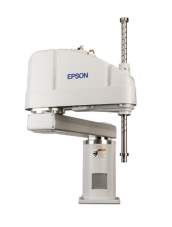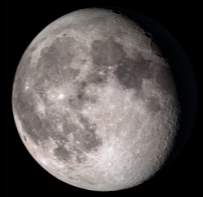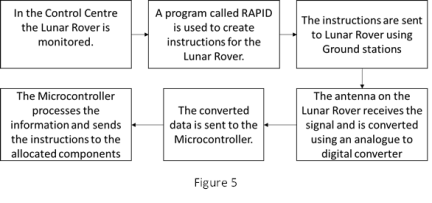Mechatronics Case Study: Lunar Rover Sensors and Actuators
| ✅ Paper Type: Free Essay | ✅ Subject: Engineering |
| ✅ Wordcount: 2071 words | ✅ Published: 23 Sep 2019 |
Problem statement
The aim is to design a lunar rover to explore the surface of the Moon and send back useful data for a period of a year. Different sensors and actuators are to be applied to the rover to receive useful information about the rover’s exploration. There are many types of sensors and actuators and only a specific set of sensors and actuators are suitable for the moon’s environment. The sensors are the ‘eyes’ the actuators are the ‘muscles’ of the system. We are investigating sensors and actuators and finding specific sensors and actuators that would be beneficial to add to the lunar rover leaving out any that aren’t essential.
Using the information obtained through investigation, decisions are made, applying sensors and actuators that are required into the lunar rover leaving out any unnecessary equipment.
The purpose is to have a good understanding of actuators and sensors used, to know what is appropriate for a device such as a lunar rover.
Lunar Rover Design Requirements:
- Be able to move, steer and stop
- Have a storage space to collect samples
- The sensors and actuators should be suitable to function on the moon.
- Batteries used should have a rechargeable cycle life of 50 cycles.
- Have appropriate sensors and actuators that are ideal for lunar exploration.
- Have a solar panel to recharge the batteries
- Need to have two batteries so while one gets charged the other can be utilised
- The structure of the lunar vehicle should be able to hold 200 kg of samples, when it’s overall mass is 300kg
Types of Sensors and Actuators
Passive sensors
By using resistive sensors, we can calculate voltage. Finding the voltage is important to monitor the battery life of the lunar rover. By using a passive sensor to find the voltage, no external power is required for this sensor.
Active sensors
Vibration sensor: Machinery produce vibrations, which can indicate the health of the contraption. With vibration analysis, a tool to determine a machine’s condition, the vibration sensors can determine the lunar rover’s condition as well as locate problems or areas requiring repairs.
(Reference: 9,10)
Solar Radiation Sensor: It would detect when it’s under direct sunlight allowing the rover to recharge using solar panel/panels from the sun’s rays.
Types of Digital Sensors
Having a digital limit switch prevents the lunar rover traveling past an allocated point as it acts like a proximity sensor.
Between the two digital optical encoders incremental and absolute encoder, absolute encoders are better as it can remember the datum point even when the device is reset.
Digital Accelerometer: To detect change in position, velocity, and orientation. To monitor the location, speed of the rover as well as orientation in case the rover happens to topple over.
Actuators
Actuators are required for the wheels and the robotic arm that will be used to collect samples for the lunar rover. For the wheels I have selected the Brushless DC motors. Brushless DC Motors require little maintenance, they are more reliable and easier to control.
As for the robotic arm, I would use servo motors as they have fast response, high accuracy and they provide feedback automatically.
For steering, an electronic actuator is used, which is called electronic power-assisted steering (EPAS) actuator for short. This actuator uses brushless motor, gearing and programmable electronic motor controller to steer. This type of actuator makes it possible to have the lunar rover remote controlled without any astronauts taking control of the rover.
Robotic arm selection
Using an electrical actuating system is more useful for the lunar rover other than a hydraulic or pneumatic system because it’s advantages are ideal for the lunar rover. Electrical actuators can be reprogrammed quickly and provide complete control and immediate feedback for diagnostic and maintenance. Out of the electrical actuators AC servomotors require little maintenance, don’t produce electrical noise which would be suitable for the robotic arm.
Below is an example of the type of robotic arm that will be used for the lunar rover.

Figure 1

Power consumption
Below is different sensors that will be part of the lunar rover design and details of how much power is required for each component using P=I*V
Vibration Sensors: Power Supply Voltage 5.5 V Current Consumption 300 μA
Power: 0.00165W
Solar Radiation Sensor: Power Supply Voltage 36V Current Consumption 20mA
Power: 0.72W
Absolute encoder: Power Supply Voltage 24V Current consumption 80 mA
Power: 1.92W
Digital Limit Switch: Power Supply Voltage 90V Current consumption 100mA
Power: 9W
Digital Accelerometer: 165 μA 3.6V supply voltage
Power: 0.000594W
To power up the Lunar Rover, two batteries will be required, one will discharge whilst the other is being recharged using the solar panel attached to the rover.
|
Fully Operational (Watts) |
Idle (Watts) |
|
|
Locomotion (x4 motors for wheels) |
180 |
0 |
|
Steering Actuator |
800 |
0 |
|
Sensors |
11.64 |
11.64 |
|
Robotic Arm |
2500 |
0 |
|
Communication |
90 |
30 |
|
Imagery |
16.65 |
7.95 |
|
Computing |
60 |
20 |
|
Guidance, Navigation and Control |
35 |
0 |
|
Total |
3693.29 Figure 3
|
69.59 |
Communication, Computing and GNC is information found from a detailed report in the bibliography.(Reference:28)
Any components that require an AC signal can be converted using an inverter and a rectifier can be applied to AC signals that need DC signals. The converters can’t completely convert signals from one type to another as a small percentage of power is lost in the process.
The requirements for speed and range required for the lunar rover design has been made the same as the Apollo lunar rover NASA designed. Maximum range is about 92 km and maximum speeds of approximately 14 km/hr.
By applying a formula called trap speed as shown below, the amount of power required to move a vehicle of a max mass of 500kg at a speed of 14km/hr was 0.1 horse power which is 75 watts. This meant a strong single motor with 75 watts had enough power to move 500 kg at 14km/hr. The lunar rover design will have 4 motors, one for each wheel. After comparing the requirements to previous lunar rover designs that were manufactured, a set of 4 motors were found that required 45 watts each. This is more than enough to meet the requirements and compensate for any power loss as motors can’t produce 100% efficiency.
(Reference:27)
The power to weight ratio for the motor without any additional load is
If 200kg of samples are added to the lunar rover, the power to weight ratio would be 0.09 W/kg as shown below.
Lifting arm
The power to weight ratio for the robotic arm when carrying the maximum payload of 20kg is 125 W/kg as shown below.
For imagery the type of camera used for Apollo lunar rover will be used for this lunar rover design. The camera is called for short, RCA J-series GCTA camera. Having a camera would help with navigating, locating samples and visual of what the surface the moon is like. The power usage has been applied to figure 3.
Most rovers used non-rechargeable batteries, but to make sure the rover can function for a whole year on the moon two rechargeable batteries and a solar panel will be added to the lunar rover design.
The rechargeable batteries the lunar rover will have is called Powerwall from the Tesla company. It has a storage of 6.4kWh. Whilst one of them powers the lunar rover the other will be charged using the solar panel. When the battery for one of the power walls has almost depleted the lunar rover will switch to the other battery as back up.
Solar panels
On earth, weather conditions can affect how much solar energy can be produced, but on the moon the solar panel can get maximum sun exposure since the moon has no atmosphere for factors like weather to reduce power generated. The moon has a sunny and dark side, which rotates every 14 days.
By having a 110-watt solar panel charge up for that long, the total power produced is calculated below.
This is more than enough power to fully charge up 5 powerwalls. The solar panel chosen was from a company called SunPower which is one of the top solar panel manufacturing brands. The model chosen for the lunar rover is called SPR-E-Flex-110. It’s a flexible, quite durable solar panel and impervious to cracking and corrosion.

The Lunar environment
To find out operational requirements for the lunar rover, an investigation into what the environment of the moon needs to be checked first.
Surface temperature of the moon (in direct sunlight): Around 127 degrees Celsius
Surface temperature of the moon (shaded): Around -173 degrees Celsius
Pressure: 3 × 10−15 atm
Surface Gravity:1.62 m/s2
Revolution period (days): 27.3 ≈ 28
Some components used on the Lunar Rover can’t endure the large temperature difference and will require some insulation.
Guidance, Navigation and Control and Telemetry
The frequency that will be used for communication will be around 2GHz and commands will be received using an antenna attached to the lunar rover. S band frequency is less prone to rain fading compared to other frequency bands making it more ideal for the rover.
Since the rover will have a camera, two antennas will be required, a high-gain antenna for TV coverage and a low-gain antenna for lunar rover communications. Transmitting TV footage of high resolution will need to be encoded, to make it more compact, since the bandwidth is limited and will require a lot of power.
Sensors like vibration sensors produce signals that are small to transmit, a form of signal conditioning is to amplify the signals, then encode them using an analogue to digital converter. After conditioning, the feedback is sent to the control centre.
In figure 5 below shows the process of communication from Earth to the Lunar Rover

References
Power consumption references
- Omroncom. 2019. Omroncom. [Online]. [2 January 2019]. Available from: https://omronfs.omron.com/ko_KR/ecb/products/pdf/en-d7s.pdf
- Globalwcom. 2019. Globalwcom. [Online]. [2 January 2019]. Available from: http://www.globalw.com/downloads/WE/WE300B.pdf
- Omron-apcom. 2019. Omron-apcom. [Online]. [2 January 2019]. Available from: http://www.omron-ap.com/selection_guide/sensor/rotary_main.asp
- Farnellcom. 2019. Farnellcom. [Online]. [2 January 2019]. Available from: http://www.farnell.com/datasheets/1789320.pdf
- Tecsiscom. 2019. Tecsiscom. [Online]. [2 January 2019]. Available from: https://www.tecsis.com/fileadmin/Content/tecsis/2_Files/1_Force/J_Electronics/Limit_Switch_Electronics/ae987.pdf
Lunar Rover Software
- Cloudfrontnet. 2019. Cloudfrontnet. [Online]. [2 January 2019]. Available from: https://d2vkrkwbbxbylk.cloudfront.net/sites/default/files/Introduction to RAPID.pdf
Sensor information
- Digikeycom. 2018. Digikeycom. [Online]. [27 December 2018]. Available from: https://www.digikey.com/en/articles/techzone/2012/oct/what-you-need-to-know-about-vibration-sensors
- Elprocuscom. 2014. ElProCus – Electronic Projects for Engineering Students. [Online]. [27 December 2018].Available from: https://www.elprocus.com/types-analog-digital-sensors/
Lunar Rover Information
- Digikeycouk. 2019. Digikeycouk. [Online]. [3 January 2019]. Available from: https://www.digikey.co.uk/en/articles/techzone/2013/jan/vibration-sensor-applications-and-solutions
- Digikeycouk. 2019. Digikeycouk. [Online]. [3 January 2019]. Available from: https://www.digikey.co.uk/en/articles/techzone/2012/oct/what-you-need-to-know-about-vibration-sensors
- Collectspacecom. 2018. CollectSPACEcom. [Online]. [27 December 2018]. Available from: http://www.collectspace.com/news/news-120508a.html
- Wikipediaorg. 2018. Wikipediaorg. [Online]. [27 December 2018]. Available from: https://en.wikipedia.org/wiki/Lunar_Roving_Vehicle
- Theweatherpredictioncom. 2018.Theweatherpredictioncom. [Online]. [27 December 2018].Available from: http://www.theweatherprediction.com/habyhints3/975/
- Alliedmotioncom. 2019. Allied Motion. [Online]. [3 January 2019]. Available from: https://www.alliedmotion.com/vehicle-steering-traction/electric-steering/pow-r-steer-epas-actuator/
Robotic Arm
- Researchgatenet. 2018. ResearchGate. [Online]. [27 December 2018]. Available from: https://www.researchgate.net/publication/289893486_Design_and_Development_of_a_Mechanism_of_Robotic_Arm_for_Lifting_Part1
- Epsoncouk. 2019. Epsoncouk. [Online]. [2 January 2019]. Available from: https://www.epson.co.uk/products/robot/epson-scara-g20-a04s
Communication
- Wikipediaorg. 2018. Wikipediaorg. [Online]. [27 December 2018]. Available from: https://en.wikipedia.org/wiki/Unified_S-band
- Rfwireless-worldcom. 2018. Rfwireless-worldcom. [Online]. [27 December 2018]. Available from: http://www.rfwireless-world.com/Terminology/Advantages-and-Disadvantages-of-L-S-C-X-Ku-K-Ka-Frequency-Bands.html
Solar panel
- Mpowerukcom. 2019. Mpowerukcom. [Online]. [2 January 2019]. Available from: https://www.mpoweruk.com/solar.htm
- Sunpowercom. 2019. Sunpowercom. [Online]. [3 January 2019]. Available from: http://spectrum.sunpower.com/
- Sunpowercom. 2019. Sunpowercom. [Online]. [3 January 2019]. Available from: http://spectrum.sunpower.com/sites/default/files/uploads/resources/sp_E_Flex_110W_UK.pdf
Pictures
- Si-cdncom. 2019. Si-cdncom. [Online]. [2 January 2019]. Available from: https://thumbs-prod.si-cdn.com/rJxu1Y5_7wK74-u2AZz8NYfqldo=/800×600/filters:no_upscale()/https://public-media.si-cdn.com/filer/b4/9c/b49c6c43-46bf-4f64-ae41-9937bb9e1a96/moon0095.jpg
- Systemdevicescouk. 2019. Systemdevicescouk. [Online]. [3 January 2019]. Available from: https://www.systemdevices.co.uk/wp-content/uploads/2017/09/g20.png
Lunar Rover Environment
- Spacecom. 2019. Spacecom. [Online]. [3 January 2019]. Available from: https://www.space.com/18175-moon-temperature.html
- Wikipediaorg. 2019. Wikipediaorg. [Online]. [3 January 2019]. Available from: https://en.wikipedia.org/wiki/Atmosphere_of_the_Moon
Bibliography
Lunar Rover
- Nasagov. 2019. Nasagov. [Online]. [2 January 2019]. Available from: https://www.hq.nasa.gov/alsj/GCTA-Final-Report.pdf
- Terrabuildercom. 2019. Terrabuildercom. [Online]. [2 January 2019]. Available from: http://www.terrabuilder.com/DL_Files/LRVManual.pdf
Cite This Work
To export a reference to this article please select a referencing stye below:
Related Services
View allDMCA / Removal Request
If you are the original writer of this essay and no longer wish to have your work published on UKEssays.com then please click the following link to email our support team:
Request essay removal


